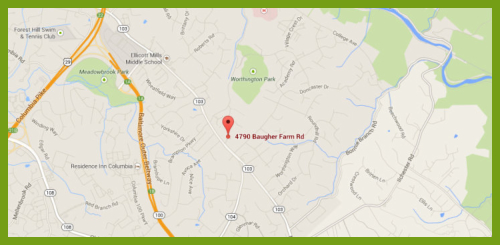Practical Life

This area of the curriculum is designed to invite the young learner to act and work on real life tasks that foster independence, coordination, order and concentration. It is in a sense the doorway to the Montessori curriculum. This is the area where the child may first choose independent work. The practical life area contains many attractively displayed object familiar to the child, including a variety of items commonly used in the tasks of daily living, like eating dressing and cleaning.
They offer the child meaningful, non-threatening modes of activity. The materials are also carefully designed and demonstrated to help teach skills involved with caring for the environment and the self, to encourage responsibility, autonomy and to promote high self-esteem.
Sensorial
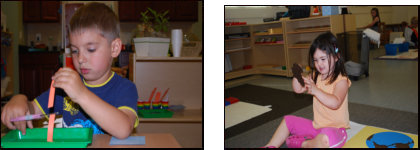
Dr. Montessori saw the senses as the “doorway to the mind.” She considered sensory and manipulation not only an aid to the development of maturing sense organs (eyes, ears, nose, tongue and skin) but a starting point for the intellectual growth. She believed that by helping children to order, compare and classify sensory stimulation, their intellectual development would be greatly assisted and future learning would be more meaningful and useful. The basic sensorial exercise inspires careful observation and calls attention to specific qualities requiring identification of similarities and contrasts. The mind must judge, compare, classify and draw conclusions. These exercises tend to fascinate children because they are difficult enough to represent a real and meaningful challenge. They are then better prepared for future learning in math, language, and science and making sense of life’s experiences and information in general.
Math
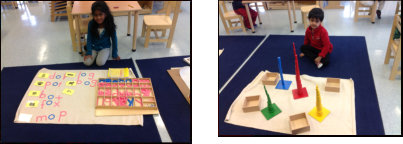
The math materials are simple, yet intelligent. Children start their work with understanding the number and the quantity one to ten. Then they move onto decimal system, understanding units, tens, hundreds and thousands. Then all the operations are performed with 4 digit numbers. Children do linear counting with beads like hundred-bead chain, thousand-bead chain, etc.; The teen and the ten boards depict the number and the quantity from 1 to 99. The child will perform such tasks as addition, subtraction, multiplication and division through various materials to understand the function of the each operation. They give the child a sensorial experience of the abstraction that is mathematics, allowing them to store concepts so that when the time comes to deal in abstract terms, the understanding is already there.
Language

Language development is a concern of the entire Montessori classroom. Many activities in other areas, as well as with a large group, foster vocabulary development, communication skills, writing and reading readiness.
In the language area we will find a large variety of reading readiness materials, including materials for phonetic analysis, word attack skills and reading, as well as materials for the refinement of motor control for writing.
In the Montessori Method, writing precedes reading, as the children explore with drawing and forming letters. The process of learning how to read should be as painless and simple as learning how to speak. The child begins by exploring the sounds that compose words and by relating them to the letters of the alphabet. He can soon produce words and sentences free of all other mechanical difficulties. In the meantime he trains his hand to become precise and sure for the writing movements. Reading is prepared indirectly from writing. The child starts from what he knows about the letters and the sounds.
Then we give him the key to read all the words he can encounter. Reading skills normally develop so smoothly in Montessori classrooms that students tend to exhibit a sudden “reading explosion” which leaves the children and their families beaming with pride.
Dr. Montessori’s research confirmed what observant parents have always known: children learn best by touch and manipulation, not by repeating what they are told. Her manipulative approach to teaching children how to read phonetically is nothing short of brilliance and should have long ago become a basic element on every Early-childhood classroom around the world.
Music and Art
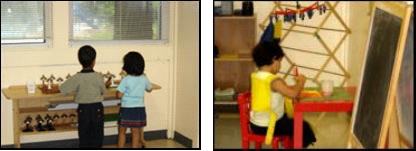
Mrs. Joane is our music teachers. She conducts music class every Tuesday in both the classrooms for 30 minutes. She teaches songs, introduce various instruments, rhythm activities and musical stories. Children do a musical performance on the graduation day.
Music is introduced through Bells. Children play the bells and listen to the various notes, identify the notes and grade the notes. Then the note symbols, Staff board are introduced. Children will be listening to music composed by different musicians and read about their life. Children are introduced to read musical notes at an advanced level.
The art area provides a variety of mediums for the children to create and explore. Children are introduced to the color concept at the sensorial area through primary and secondary color boxes. Children do painting, sponge painting, collage, stitching, button sewing, paper crafts etc., The child looks at various pictures created by various artists and read about various artists.
Spanish
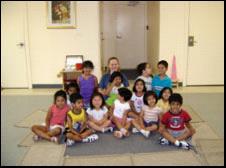
Spanish lessons are offered twice a week by Mrs. Tere. She teaches songs, words, simple conversations in spanish.
Outdoor Time
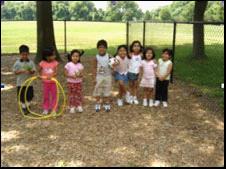 Children have a wonderful play time about half an hour per session in our fenced backyard. The playground has bounded rubber mulch which is safe and soft to run and play. We have also provided with brand new play mobile to climb and slide.
Children have a wonderful play time about half an hour per session in our fenced backyard. The playground has bounded rubber mulch which is safe and soft to run and play. We have also provided with brand new play mobile to climb and slide.

